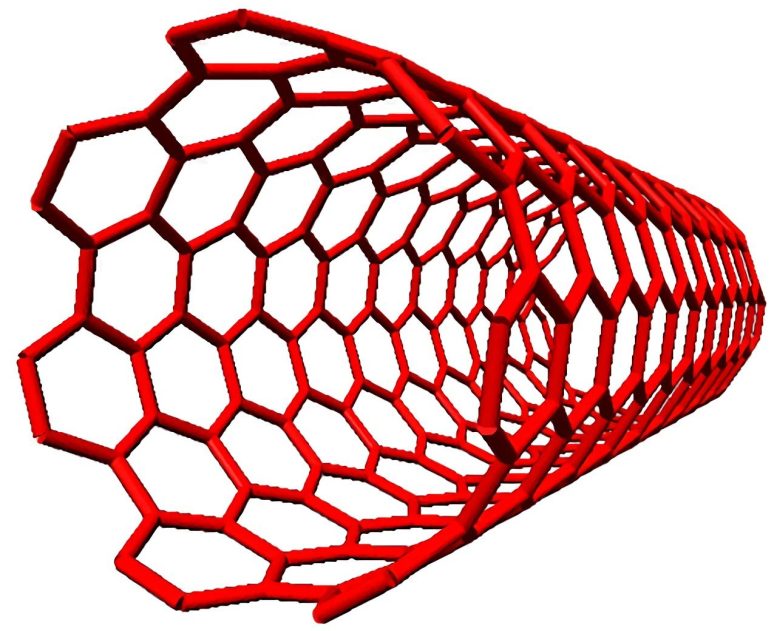
Armchair carbon nanotubes, so named for the arrangement of atoms that make their ends look like armchairs, are the most desirable among nanotube researchers for their superior electrical properties. Credit: Image by Erik Hároz
A newly published study provides scientists with a valuable resource for detailed information about metallic carbon nanotubes.
The first fruits of a cooperative venture between scientists at Rice University and the National Institute of Standards and Technology (NIST) have appeared in a paper that brings together a wealth of information for those who wish to use the unique properties of metallic carbon nanotubes.
The feature article published recently in the Royal Society of Chemistry journal Nanoscale gathers research about the separation and fundamental characteristics of armchair carbon nanotubes, which have been of particular interest to researchers trying to tune their electronic and optical properties.
This paper, said Rice physicist Junichiro Kono, provides scientists a valuable resource for detailed information about metallic carbon nanotubes, especially armchair nanotubes. “Basically, we summarized all our recent findings as well as all information we could find in the literature about metallic nanotubes, along with detailed accounts of preparation methods for metal-enriched nanotube samples, to show the community just how much we now understand about these one-dimensional metals,” he said.
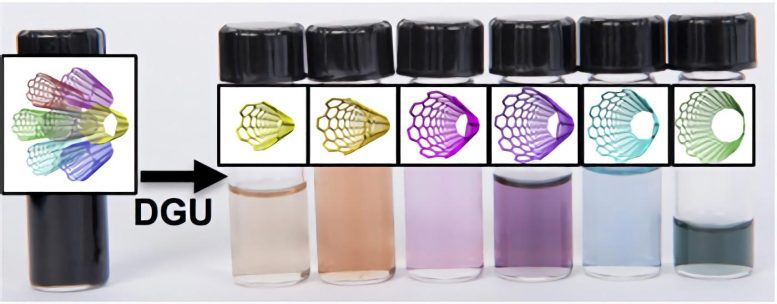
Layers of nanotubes take on different colors after separation via density gradient ultracentrifugation at Rice University. Credit: Image by Erik Hároz
As part of the lengthy work, the team compiled and published tables of essential statistics, including optical properties, for a variety of metallic nanotubes. “We provide fundamental theoretical backgrounds and then show very detailed experimental results on unique properties of metallic nanotubes,” Kono said. “This paper summarizes what kind of aspects are understood, and what is not, about fundamental optical processes in nanotubes and will make it easier for researchers to identify their spectroscopic features and transition energies.”
Nanotubes come in many flavors, depending on their chirality. Chirality is a characteristic akin to the angles at which a flat sheet of paper might align when wrapped into a tube. Cut the tube in half and the atoms at the open edge would line up in the shape of an armchair, a zigzag, or some variant. Even though their raw material is identical – chicken-wire-like hexagons of carbon – the chirality makes all the difference in how nanotubes transmit electricity.
Armchairs are the most coveted because they have no band gap; electrons flow through without resistance. Cables made with armchair nanotubes have the potential to move electricity over great distances with virtually no loss. That makes them the gold standard as the basic element of armchair quantum wire. The ongoing development of this very strong, lightweight, high-capacity cable could improve further the record properties of multifunctional carbon nanotube fibers that are being developed by the group of Rice Professor Matteo Pasquali.

A molecular model shows a single strand of DNA (the yellow ribbon) coiled around an “armchair” carbon nanotube. The image illustrates a process created by National Institute of Standards and Technology scientist Ming Zheng to make highly purified samples of armchair nanotubes, one of several processes described in a new Nanoscale paper by researchers at NIST, Rice University, and Los Alamos National Laboratory. Credit: Image by Roxbury, Jagota/NIST
The new work led by Kono and Robert Hauge, a distinguished faculty fellow in chemistry at Rice, along with scientists at NIST and Los Alamos National Laboratory, looks beyond the armchair’s established electrical properties to further detail their potential for electronic, sensing, optical and photonic devices.
“Of course, to get there, we need really good samples,” Kono said. “Many applications will rely on our ability to separate carbon nanotubes and then assemble macroscopically ordered structures consisting of single-chirality nanotubes. Nobody can do that at this point.”
When a batch of nanotubes comes out of a furnace, it’s a jumble of types. That makes detailed analysis of their characteristics — let alone their practical use — a challenge.
But techniques developed in recent years at Rice and by NIST scientist Ming Zheng to purify metallic nanotubes are beginning to change that. Rice graduate student Erik Hároz said recent experiments established “unambiguous evidence” that a process he and Kono are using called density gradient ultracentrifugation can enrich ensemble samples of armchairs. Taking things further, Zheng’s method of DNA-based ion-exchange chromatography provides very small samples of ultrapure armchair nanotubes of a single chirality.
Rice and NIST are now looking at ways to combine the methods to get larger batches of a specific armchair chirality, Kono said.
If anyone can accomplish such a breakthrough, these labs can, he said. “Our team has the best possible armchair samples available due to these two methods, and we have recently made significant progress in increasing our understanding of the properties of armchair nanotubes, as described in this Nanoscale article.”
Reference: “Fundamental optical processes in armchair carbon nanotubes” by Erik H. Hároz, Juan G. Duque, Xiaomin Tu, Ming Zheng, Angela R. Hight Walker, Robert H. Hauge, Stephen K. Doorn and Junichiro Kono, 4 January 2013, Nanoscale.
DOI: 10.1039/C2NR32769D
Co-authors of the paper with Hároz, Hauge, Zheng and Kono are Juan Duque, who earned his doctorate at Rice and is now a research scientist at Los Alamos; Xiaomin Tu, a former postdoctoral researcher at NIST, now an intellectual property subject matter expert at Chevron; Angela Hight Walker, project leader in the Semiconductor and Dimensional Metrology Division at NIST; and Stephen Doorn, science partner leader in the Center for Integrated Nanotechnologies at Los Alamos. Kono is a professor of electrical and computer engineering and of physics and astronomy at Rice. Pasquali is a professor of chemical and biomolecular engineering and of chemistry.
The National Science Foundation, the Department of Energy, the Air Force Research Laboratories, Los Alamos National Laboratory, the Robert A. Welch Foundation, NASA, and the World Class University Program at Sungkyunkwan University supported the research.


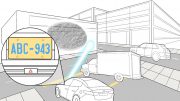
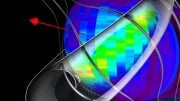
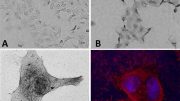

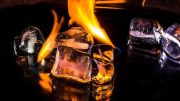


Be the first to comment on "Examining the Fundamentals of Desirable Nanotubes"